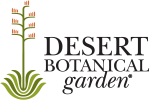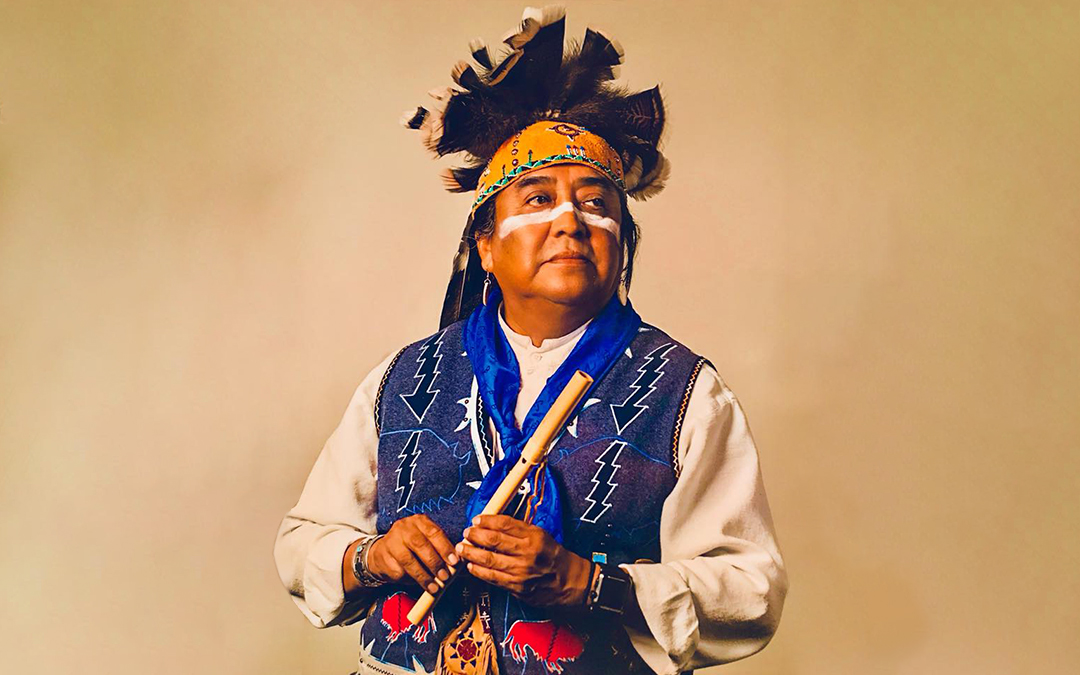For seven years, Ken Duncan Sr., founder and director of Yellow Bird Indian Dancers, has been sharing stories of his Native ancestors through dance, song and storytelling at Desert Botanical Garden.
Ken first started at the Garden by rebuilding the Apache wickiups, a dome-shaped dwelling structure used by Native people, on the Plants and People of the Sonoran Desert Loop Trail. The trail provides guests an overview of the complex cultural relationships between Native people and the plants of the Sonoran Desert. The trail highlights the Tohono O’odham, Western Apache and Hispanic households.
As Las Noches de las Luminarias approaches, Ken is getting ready to share stories that transport visitors to the smells, tastes, sights and sounds of the desert.
In honor of Native American Indian Heritage Month, the Garden sat down with Ken to talk about what the month means to him, the importance of tradition and his connection to the Garden.
The Q&A below was edited and condense for clarity.
Q: How did you come into partnership with the Garden?
A: Originally, my first contact with the Garden was to rebuild the Apache wickiups. I do everything my grandmother had taught me. We don’t use any man-made materials. I started building them on my own. Then, I thought it was a good teaching moment for my wife and children. It’s been a family affair for us. My children know how to build it now. The Garden has allowed me to build Apache wickiups and now my grandchildren are building them.
Q: What’s the important of passing that tradition on to your children?
A: Our prophecy says that life dances in a circle. We are supposed to live off of what nature gives us. That knowledge that we have as Apache is to harness the treasures and gifts that are in the Garden, right here. We use the willow, the yucca, the cottonwood to build our structures for shelter. We are told, although we have modern infrastructure, the time is going to come when we will have to depend on nature once more. When that does happen, the Native people are told life will come full circle. The reason I have taught my children how to build wickiups is that one day, when I’m gone, my great grandchildren will teach theirs how to be ready when the time comes.
Q: What is Native American Indian Heritage Month, and what does it mean to you?
A: It was about time our country acknowledges the Native people who were the first here, and that we were the keepers of this land that was later called the Americas. This acknowledgement to make November Native American Indian Heritage Month has pushed people to want to learn more about Native American culture. As a Native American dance group, we are overwhelmed with requests from companies, schools and organizations who want us to share our dances, songs, stories and culture with them. I think it’s a good thing, especially here in Phoenix. When people are driving in the city, they don’t realize they are driving over so many canals Native people constructed many years before settlers arrived.
Q: What’s the main message you’d like to share with Garden member and guests?
A: When guests visit the Garden, right away your breath is taken away. Your breathing is slower. You can slow down here. You are able to notice how intricate plants are. We were put here to enjoy these things. You appreciate nature more and can smell everything. It is a healing of the mind, the spirit, the emotion and then the body. It’s a healing place.

